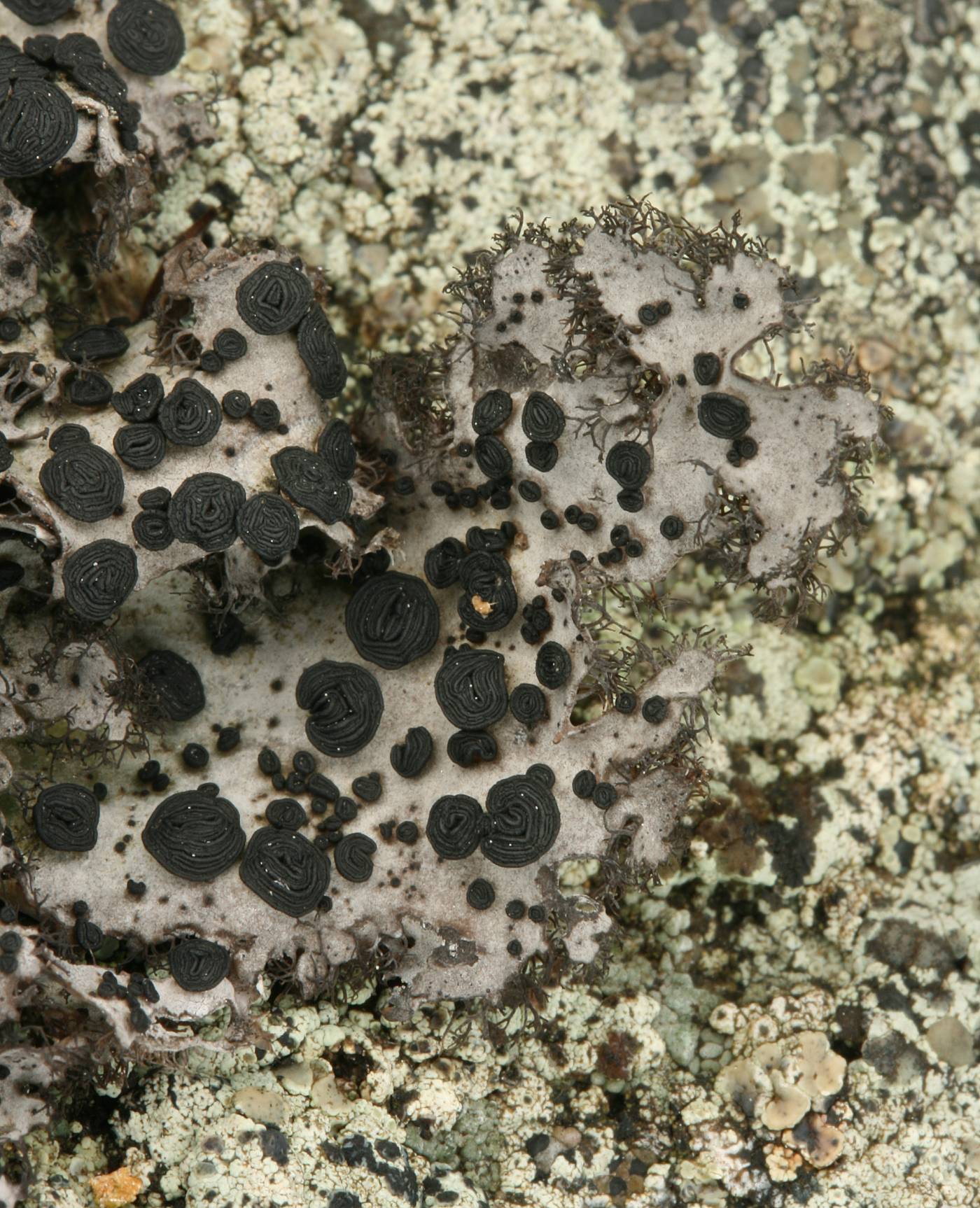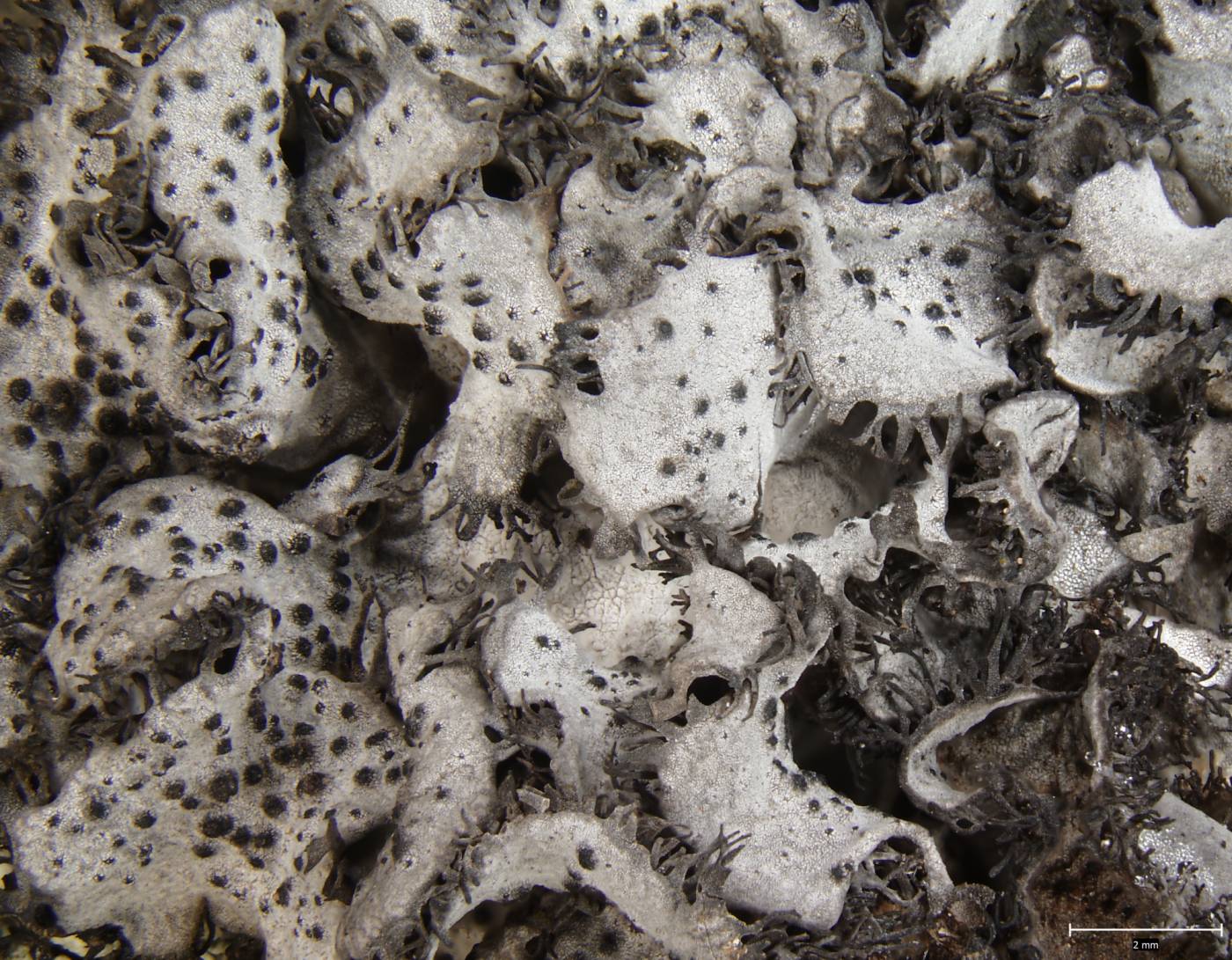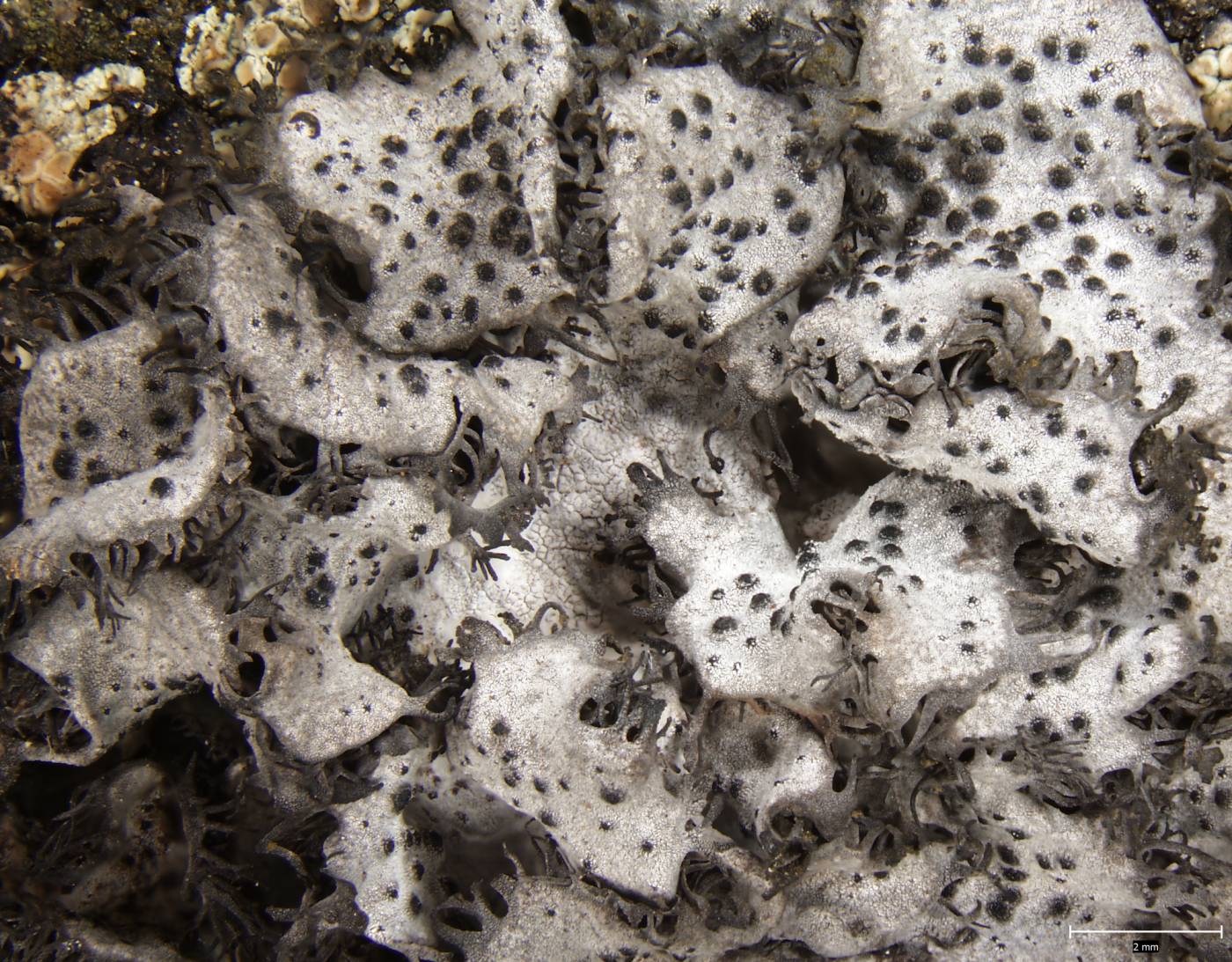Grey Umbilicaria, easily distinguished by numerous black cilia and abundant apothecia. Highly variable – a number of varieties have been circumscribed. On acidic siliceous rocks and stones in mountain and boreal areas. It prefers natural, horizontal or slightly inclined surfaces. Tolerates extreme places, exposed to wind and frost. It is the most common Umbilicaria species in both Europe and the Czech Republic. In the Czech Republic, it is abundant at highest elevations, sometimes also found in cold north-oriented screes in middle elevations or in submontane areas.
A similar species U. maculata (Krzewicka et al. 2009) was described from the Polish Carpathians and might possibly occur in the Czech Republic too. It is distinguished by the grey-brown thallus with white spots near margins, less numerous cilia and sessile apothecia.
Literature: Lisická E. (1980): Flechtenfamilie Umbilicariaceae Fée in der Tschechoslowakei. – Biologické Práce SAV 26/4: 1–152. Krzewicka B., García M. A., Johansen S. D., Sancho L. G. & Martín M. P. (2009): Morphological and nuclear ribosomal DNA data support distinguishing two new species of Umbilicaria (Umbilicariaceae, Ascomycota) from Europe. – Lichenologist 41: 631–648.
taxonomic classification:Ascomycota → Lecanoromycetes → Umbilicariales → Umbilicariaceae → Umbilicaria
Red List (Liška & Palice 2010):NT – near threatened
Occurrence in the Czech Republic
All records: 125, confirmed 65. One click on a selected square displays particular record(s), including their source(s).



